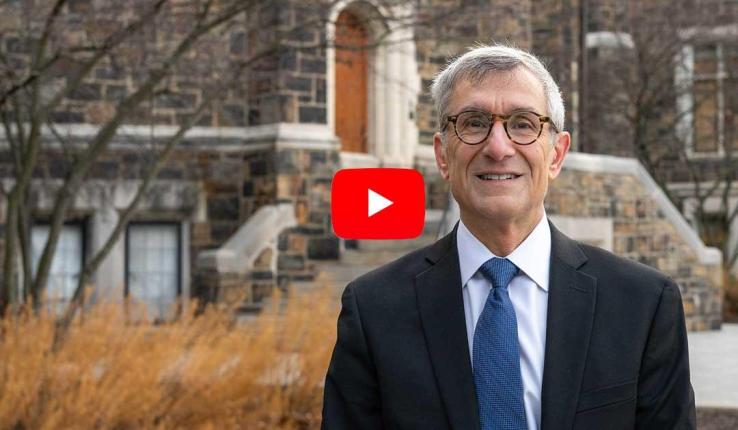A statue called “Future” sits outside the entrance to the U.S. National Archives in Washington, D.C., where government records are preserved and housed. Carved in limestone and completed by sculptor Robert Ingersoll Aitken in 1935, it depicts a woman sitting with an open book on her lap. The pages are blank, to be filled with the history that has yet to be written. A line from William Shakespeare, “What is past is prologue,” is inscribed in the pedestal to announce the reason for the archive’s existence: The past set the stage for this present moment. This present moment will set the stage for the future.
Inside the building, historian Emily Pope-Obeda sits, on occasion, combing through the paper records of the Immigration and Naturalization Services (INS). Pope-Obeda goes digging through this “terribly organized record set” in search of a better understanding of deportation practices of the past which set the stage for today and tomorrow.
She is looking specifically at practices of the 1920s for her current book project, based on extensive research, including “...hundreds and hundreds of individual case files,” she says. “A lot of the work of this is trying to take those hundreds of case files and map out patterns across them and see some of the ways those practices played out by group, by location, regional offices, all those things. I supplement that by looking at organizational records, often from immigrant rights organizations or legal aid organizations that represented immigrants in deportation proceedings.”
Pope-Obeda also searches through historical newspaper databases to gain a sense of how deportation was depicted and imagined.
According to Pope-Obeda, the 1920s was a turning point in the U.S. deportation apparatus, a time when the U.S. government undertook a focused effort to streamline and centralize operations to address populations it perceived as threats. It is when, according to Mae Ngai, a scholar who has studied U.S. immigration policies of the 20th century, deportation “came of age.”
The ’20s saw a significant rise in the number of people being deported, preceded by “... an intense persecution of suspected communists or other radicals in 1919,” says Pope-Obeda. In the 1930s, the discussion around deportation became more euphemistic. Removal of migrant populations was often referred to as a “voluntary departure,” or as “repatriation,” which is what the mass deportations of Mexicans and Mexican Americans during that period were called.
The records reveal stories of conflict, says Pope-Obeda. Much of the friction was born out of a collision between federal policies and the realities of local practices. This was true on the mainland and in U.S. territories, including Puerto Rico and the U.S. Virgin Islands, as well as Hawaii and Alaska, which were not yet states.
“You often see a very different set of local agendas,” says Pope-Obeda. “In some of these places the territorial officials push back against the U.S. government and say: ‘Sure, you have certain ideas about who is and who isn’t welcome. But this is Alaska in the 1920s. We need labor. We’re not really as concerned over their legal crossing status.’”
Sometimes local agendas also included efforts that were less official and more “vigilante” in nature.
“In a lot of places you see―and this may seem familiar from moments in a more contemporary era―a really overzealous effort to police immigrants by local populations,” she says.







